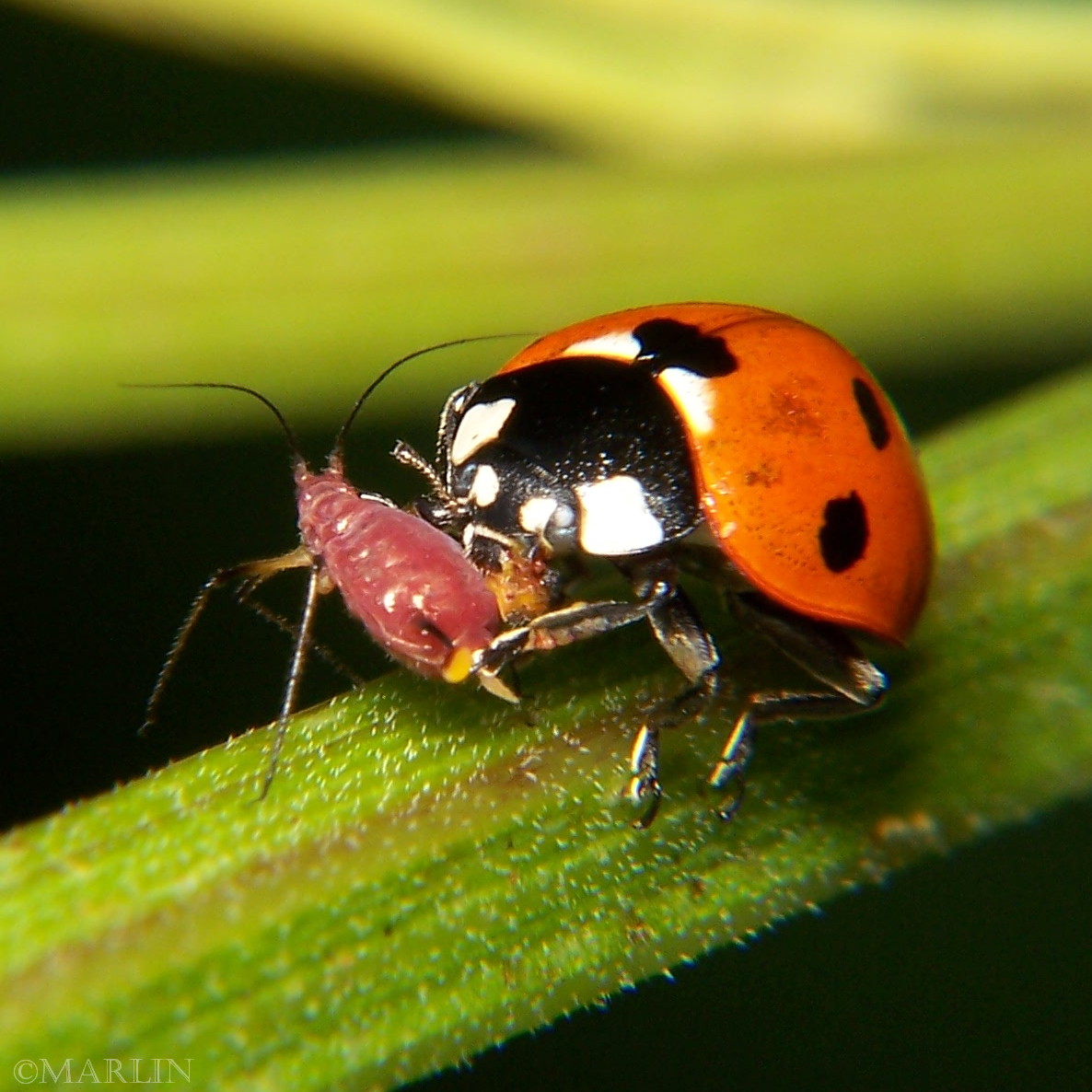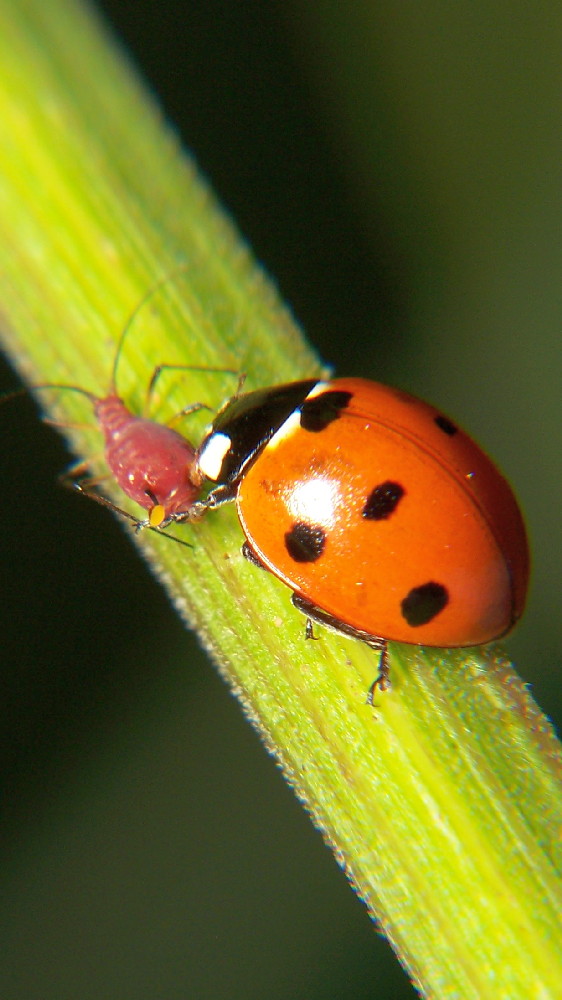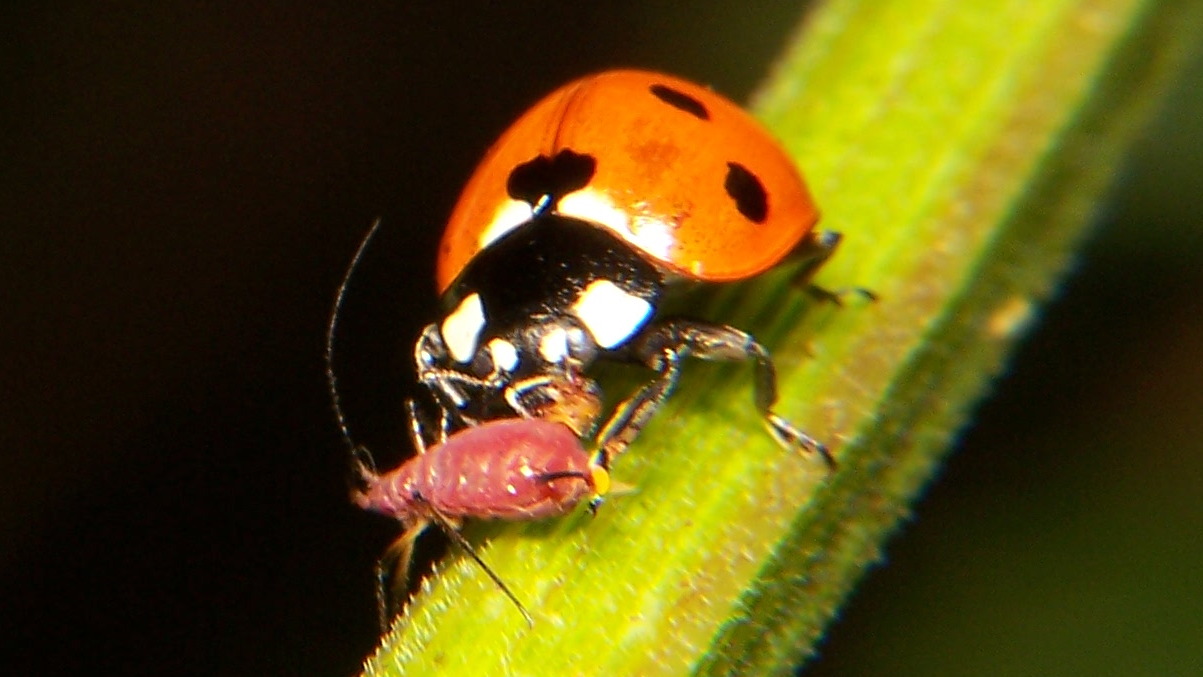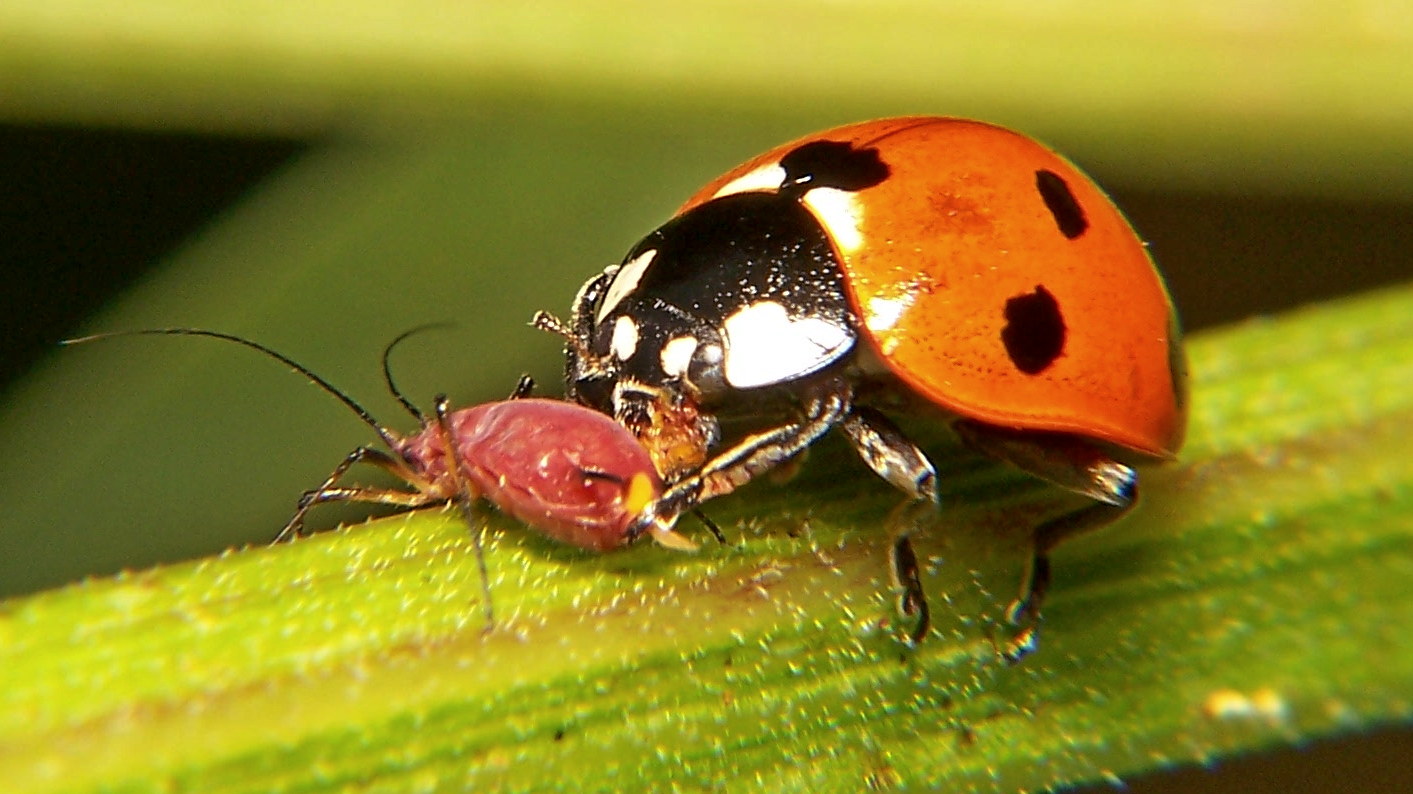Seven-Spotted Lady Beetle eats an Aphid
Family Coccinellidae – Lady Beetles (Also commonly called ladybugs or ladybirds)
Aphid predators are exploiting a plant’s ability to make sugar from sunlight.
The 7-Spotted lady beetle was imported from Europe in an early attempt at biological control of aphids; it has naturalized rapidly and inhabits most of North America.
Ladybugs often overwinter as adults in gregarious swarms under fallen leaves, bark, or inside unheated buildings.
As insects go, they are a very beneficial group, being natural enemies of many insects, especially aphids and other critters that damage plants by feeding on their sap.
Ladybugs, both adults and larvae, are known primarily as predators of aphids, but they prey also on many other pests such as soft-scale insects, mealybugs, spider mites and eggs of the Colorado Potato Beetle and European Corn Borer.
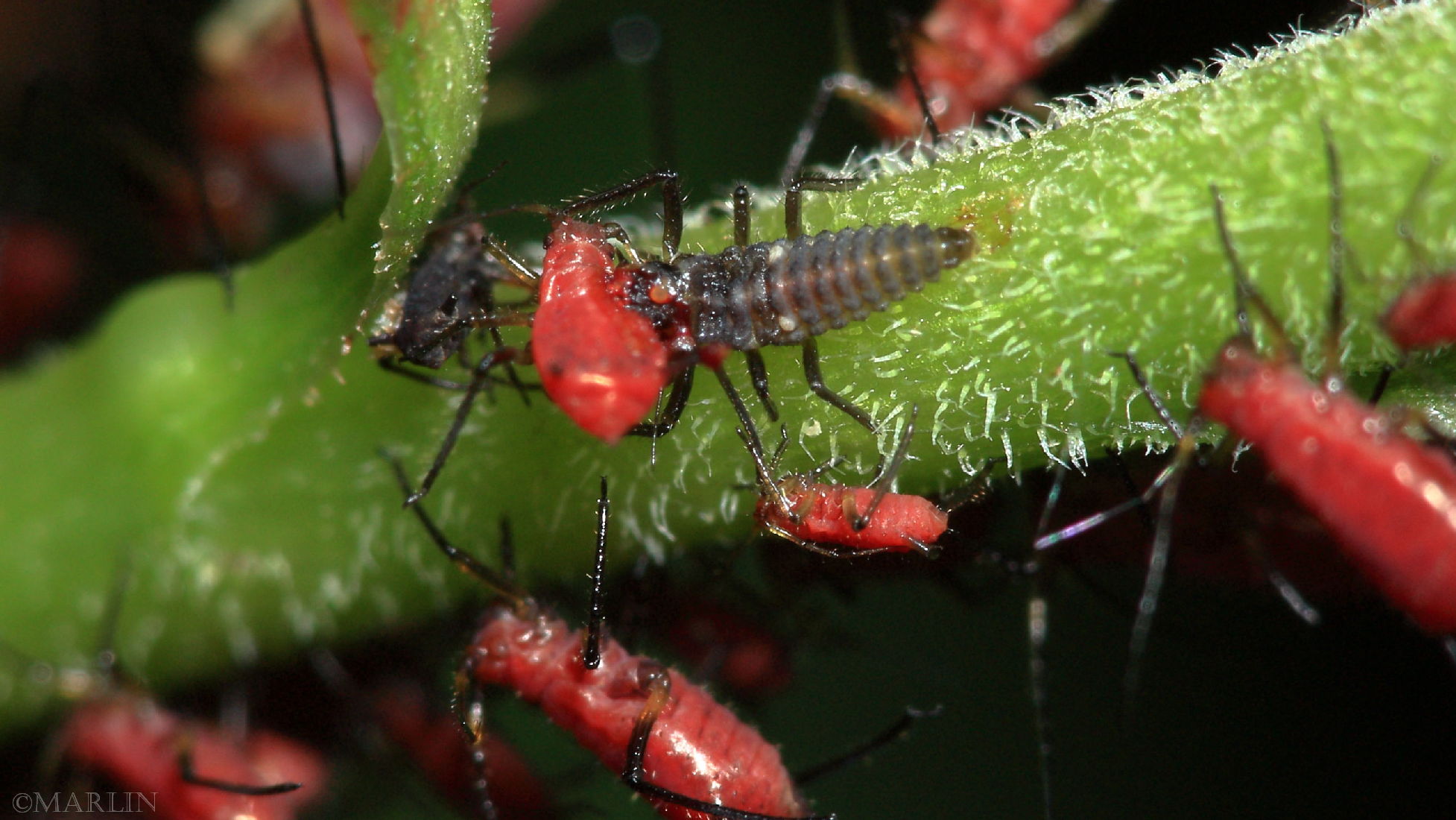 Lady Beetle larva attacks an aphid
Lady Beetle larva attacks an aphid
A single ladybug can consume vast quantities of aphids in its lifetime, perhaps as many as 5,000 or more. During the Middle Ages, these beetles were used to control aphid infestations of grapevines in vineyards.

